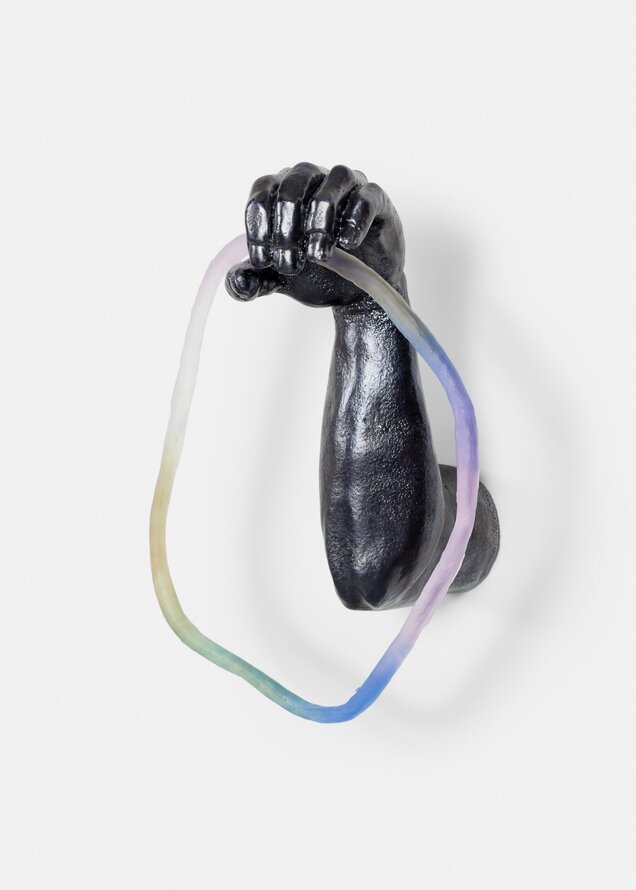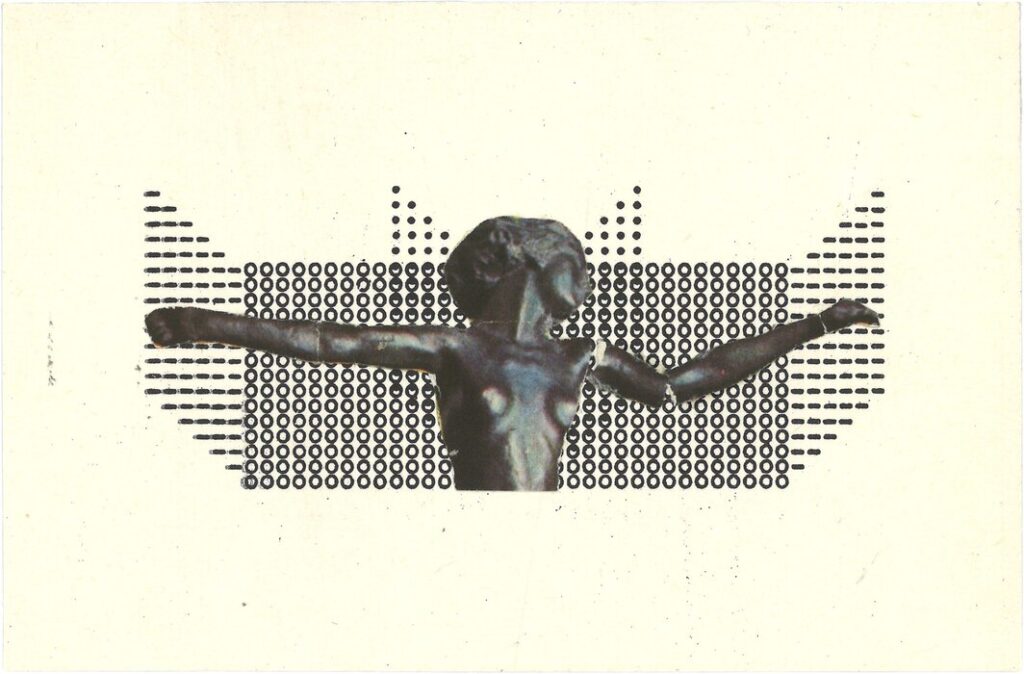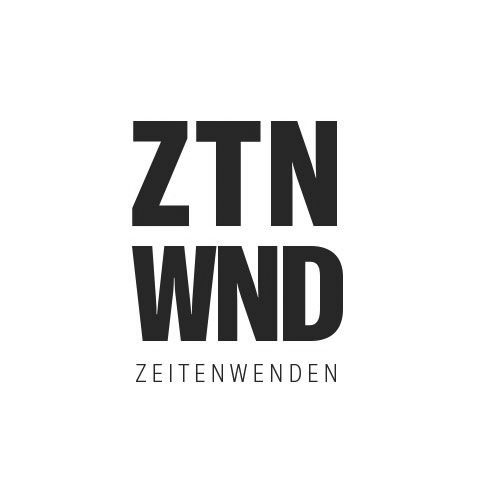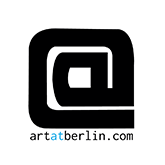The Georg Kolbe Museum will celebrate its 75th anniversary on 17 April 2025. As a prelude, the Georg Kolbe Museum is showing the group exhibition ‘Tea and Dry Biscuits’. On the occasion of Berlin Art Week, Villa Romana, Florence, and the Georg Kolbe Museum are celebrating their anniversaries together. Looking back on their 120- and 75-year histories and looking ahead to the future, they will reflect on their heritage and their present role as artist residences on 13 September 2025 (3–6 p.m.).
Abb. oben: View of the studio around the opening of the museum in 1950, photo: Georg Kolbe Museum Archive
An Anniversary Exhibition, which reflects on the institution’s own history and focuses on the staging of memory. Thirteen international contemporary artists present newly created works and engage in an expanded, vibrant dialogue between past and present. The exhibition centers on the museum’s founding moment in 1950. Housed in Kolbe’s former home and studio, the museum was the first newly established museum in postwar West Berlin—founded according to the artist’s own wishes, as stated in his will to preserve his artistic legacy
After the ceremony, the mourners went back to Kolbe’s studio and looked again at the plaster casts with which it was filled. […] There was tea and dry biscuits.
Manchester Guardian, Januar 1948
Mit Arbeiten von:
Christian Borchert, Cao Fei, Ryan Gander, Itamar Gov, Heike Kabisch, Taus Makhacheva, Laure Prouvost, Hande Sever, Kaari Upson, Álvaro Urbano, Marion Verboom, Danh Vo, Ruth Wolf-Rehfeldt und Georg Kolbe.
Georg Kolbe (1877–1947), one of the most important sculptors of the first half of the 20th century, lived and worked in what is now the museum building from 1928–29 until his death. His long-time assistant, Margrit Schwartzkopff, then took over the management of the building. It was she who transformed Kolbe’s studio into a space of remembrance—with a flower-adorned portrait, carefully arranged tools, and classical music playing from a record player. Visitors experienced the rooms as a way to feel close to the artist even after his death

The exhibition at the time showcased sculptures from all phases of Kolbe’s career, with larger-than-life plaster figures from the 1930s and 1940s dominating the space. The presentation was designed as a comprehensive tribute to the “master”—a studio turned memorial, conceived more as an emotional than an art historical experience. In 1970, Kolbe’s granddaughter Maria von Tiesenhausen took over the management of the museum and introduced a more museum-like presentation style until 1978. The selection of works became more concentrated, the exhibition design more functional—with classic pedestal presentations instead of studio staging.
Both of the first female directors were personally close to Kolbe. Criticism of his stance during the National Socialist era was largely overlooked in this early phase. The young museum was caught between the polarity of upholding tradition, familial worship, and a lack of critical distance.
The Georg Kolbe Museum’s anniversary exhibition now takes this history as its starting point for the first time. A reconstructed studio space makes it possible to experience the museum’s narrative about Kolbe in the first decades and to take a look at the history of the museum’s reception and the artist’s work in a historical context.
At the heart of the exhibition is a dialogue between historical traces and contemporary perspectives. Works by Georg Kolbe enter into an open exchange with artworks by thirteen international artists, including Christian Borchert, Cao Fei, Ryan Gander, Itamar Gov, Heike Kabisch, Taus Makhacheva, Laure Prouvost, Hande Sever, Kaari Upson, Álvaro Urbano, Marion Verboom, Danh Vo, and Ruth Wolf-Rehfeldt
The artistic contributions question how memory is formed, passed on, or suppressed: Álvaro Urbano’s installation “Noches de jardines de España” (Nights in the Gardens of Spain) (2020), presented in Kolbe’s former studio, confronts the legacy of the site with themes of exile and impermanence. Rotten oranges scattered across the floor serve as a metaphor for what has been lost—a quiet yet powerful reflection on historical violence and cultural memory. Taus Makhacheva interweaves collective history with personal memory in her filmic works. Stories of her grandfather, the poet Rasul Gamzatov, become a stage for critically examining remembrance and narrative. Artworks by Christian Borchert and Ruth Wolf-Rehfeldt expand the exhibition with perspectives from the GDR, offering a broader reflection on Kolbe’s oeuvre and the fractures of the 20th century.
Tea and Dry Biscuits presents a reflection on the possibilities and limits of memory between past, present and future.

Highlights of the Anniversary Year 2025
The exhibition Tea and Dry Biscuits An Anniversary Exhibition marks the beginning of a diverse program in the anniversary year 2025, celebrating the Georg Kolbe Museum as a living space for art and research. The garden exhibition David Hartt—The Fountain opens on June 14, 2025, at 12 PM, followed by an artist talk. The newly created work enters into a site-specific dialogue with the museum’s historic sculpture garden. Hartt engages artistically with Georg Kolbe’s Dancer’s Fountain (1922). Accompanying the exhibition, the publication The Fountain/Der Brunnen (2025, Distanz Verlag) will be released, addressing the challenging object history of the fountain from both an artistic and art historical perspective. The publication includes texts by, among others, Kirsty Bell, Max Czollek, Markues, Jimmy Robert, and Kasia Fudakowski. During Berlin Art Week, which takes place from September 10 to 14, 2025, the Georg Kolbe Museum, together with the Villa Romana in Florence, will host a multi-day festival program.
On the occasion of the 125th anniversary of the Villa Romana and the 75th anniversary of the Georg Kolbe Museum, the program will explore the history, present, and future of both institutions. The ongoing lecture series, *The Margins: Rediscovered Lives from Archives*, will focus on the lives and works of extraordinary personalities from the field of fine arts who have been forgotten, marginalized, or pushed to the periphery for various reasons. Following the successful launching a focus on Rom Landau in the fall of 2024, John Palatini and Susanne Köller will present Hans-Hasso von Veltheim on May 15, 2025—a collector, world traveler, and mediator between cultures, religions, and philosophical stances, to whom the Kunstmuseum Moritzburg will dedicate an exhibition in 2025. Additionally, the program for the exhibition will include more lectures, artist talks, guided tours, and workshops for children and young people.
Additionally, the program for the exhibition includes more lectures, artist talks, guided tours, and workshops for children and young people.

Artist Biographies:
Georg Kolbe (1877–1947, Germany)
Georg Kolbe was one of the most significant sculptors of the first half of the 20th century. Known for his bronze sculptures depicting the human body in idealized movement, he achieved breakthrough success in 1911 with The Dancer. His work, Morgen, was installed in the Barcelona Pavilion by Ludwig Mies van der Rohe in 1929. Kolbe was well connected in artistic circles and maintained close relationships with Max Beckmann, Renée Sintenis, Walter Gropius, and others. His conservative-modern style found recognition in four political systems—spanning from the German Empire through the Weimar Republic and National Socialism to the postwar period. The critical examination of his role in the 1930s and 1940s is a central focus of current research.
Christian Borchert (1942, Dresden, Germany–2000, Berlin, Germany)
His work focused on portraiture, social, and urban documentation, exploring the social structures of East Germany, the transformation phase following reunification, and various forms of personal and collective memory.
Cao Fei (1978 in Guangzhou, People’s Republic of China)
Cao Fei combines critical positions, popular aesthetics, surreal references, and documentary conventions in her films and installations. Her work reflects the rapid and ongoing changes in Chinese society.
Ryan Gander (1976Chester, United Kingdom)
Ryan Gander creates parahistorical, fictional spaces, institutions, and figures. His works combine fictional presence and absence, with implied gaps acting as a conjuration of the power of imagination and referring to real and imagined events, artworks, or people.

Itamar Gov (1989, Tel Aviv, Israel)
Itamar Gov is an interdisciplinary artist whose practice includes site-specific installations, sculptures, paintings, photographic series, neon tubes, graphic works, and videos. In his projects, he addresses the complex relationships between history, ideology, and aesthetics, exploring various forms of personal, collective, and institutional memory.
Heike Kabisch (1978, Münster, Germany)
In her sculptures, installations, drawings, and collages, she uses fragmentation as a poetic means of regeneration. Open to revision, coincidence, and time, her works resist final completion. Her drawings follow a fictional archival system that explores obfuscation and impermanence. Thus, Kabisch explores open timelines and the potential of the unfinished.
Taus Makhacheva (1983, Moscow, Soviet Union)
Taus Makhacheva explores the turbulent connections between historical narratives and the fictions of cultural authenticity in her work. Her methodology involves redesigning materials, landscapes, and monuments, as well as opening institutional spaces to allow for a multi-voiced perspective.
Laure Prouvost (1978, Croix-Lille, France)
Laure Prouvost develops fictional narratives in her artistic practice, starting with the history of her invented grandparents. Her work combines elements of fiction and reality, inviting viewers to engage with the personal and collective dimensions of memory, fantasy, and hope.
Hande Sever (1990, Istanbul, Turkey)
Hande Sever’s research-based practice focuses on the construction and manipulation of historical narratives. Drawing on theories of sovereignty and necropolitics, her work examines legal provisions, capital distribution, and art history, particularly in relation to military violence, surveillance, and censorship. Often referencing the persecution history of her own family, Sever navigates her object-based practice through the intersections of personal and collective memory, uncovering how visual culture is used both to erase and construct history.
Alvaro Urbano (1983, Madrid, Spain)
Álvaro Urbano creates works strongly related to architecture and fiction. He uses a variety of media, ranging from expansive installations to film and performative actions.
Danh Vo (1975, Bà Rịa, Vietnam)
Danh Vo uses personal life experiences in his conceptual works and installations to address broader historical, social, and political themes. His work explores the connection between objects and stories, as well as the reflection of national fears and personal identities.
Marion Verboom (1983, France)
Marion Verboom is known for her works that challenge traditional notions of sculpture and materiality. Verboom’s works explore the intersections of history, architecture, and cultural identity. In her sculptures, unexpected materials and techniques are often employed, blurring the boundaries between the physical and the conceptual.

Ruth Wolf-Rehfeldt (1932, Wurzen, Germany – 2024, Berlin, Germany)
Ruth Wolf-Rehfeldt is known for her typewriting and graphic works, which she created with an Erika typewriter starting in the 1970s. Her works engage with concrete poetry, linguistics, graphic design, and conceptual art, formulating a political statement that is associated with the mail art movement.
Kaari Upson (1970, San Bernardino, California, USA – 2021, New York, New York, USA)
Kaari Upson worked across a variety of media, including sculpture, video, drawing, and painting. Her artistic work combines autobiographical and collective traumas, fears, and fantasies, repeatedly addressing aspects of American culture and identity.
WHEN?
Opening: Wednesday, 16th April 2025, 6 pm
Some of the artists will be present. At 7 pm, Dr Kathleen Reinhardt and Dr Elisa Tamaschke will welcome visitors with speeches on the exhibition.
Exhibition dates: Thursday, 17th April – Sunday, 28th September 2025
WHERE?
Georg Kolbe Museum
Sensburger Allee 25
14055 Berlin






